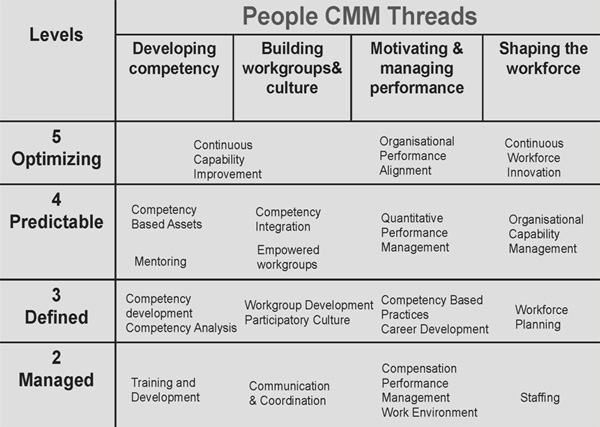Making an effective selection decision for an overseas assignment can prove to be a major problem. Typically, this decision is based on international selection criteria, which are factors used to choose international managers. These selections are influenced by the Multinational Corporations experience and often are culturally based. Sometimes as many as a dozen criteria are used, although most Multinational Corporations give serious consideration to only five or six. 1. Adaptability to Cultural Change Overseas managers must be able to adapt to change. They also need a degree of cultural toughness. Research shows that many managers are exhilarated at the beginning of their overseas assignment. After a few months, however, a form of culture shock creeps in, and they begin to encounter frustration and feel confused in their new environment. One analysis noted that many of the most effective international managers suffer this cultural shock. Organizations examine a number of characteristics Continue reading
International HRM
EFQM Excellence Model
The European Foundation for Quality Management (EFQM) Excellence Model was introduced in 1991 as the framework for organizational self-assessment and as the basis for judging entrants to the European Quality Award, which was awarded for the first time in 1992. A number of factors have encouraged many western countries to introduce quality awards. Among these were: the importance of quality for competitiveness, and contribution of benchmarking and self-assessment techniques to improving performance. The award models are used extensively throughout the world by leading companies and can thus be used for international benchmarking comparisons. A framework designed to assist organisations achieve business excellence through continuous improvement in the management and deployment of processes to engender wider use of best practice activities. It enables the calculation of scores against a number of criteria that can be used for either internal or external “benchmark” comparisons. It is hoped that the results of these Continue reading
People Capability Maturity Model (PCMM)
People Capability Maturity Model (PCMM) is a maturity framework that focuses on continuously improving the management and development of the human assets of a software or information systems organization. PCMM can be perceived as the application of the principles of Capability Maturity Model to human assets of a software organization. It describes an evolutionary improvement path from ad hoc, inconsistently performed practices, to a mature, disciplined, and continuously improving development of the knowledge, skills, and motivation of the workforce. Although the focus in People CMM is on software or information system organizations, the processes and practices are applicable for any organization that aims to improve the capability of its workforce. PCMM will be guiding and effective particularly for organizations whose core processes are knowledge intensive. The primary objective of the People Capability Maturity Model is to improve the capability of the entire workforce. This can be defined as the level Continue reading
Importance of International HRM
Various threats generated by the liberalization of an economy can be met only through bringing corresponding changes in management practices including practices related to International HRM. In the newer management practices, more emphasis has been given to International HRM because of the following factors: 1. Emphasis on Core Competency. Post-liberalization, many organizations have started focusing on their core competence and businesses are being organized around that. Core competence is a unique strength of an organization that may not be shared by others. This may be in the form of unique financial resources (finance available at a much lower cost), manpower resources, marketing capability, or technological capability. If the business is organized on the basis of core competency, it is likely to generate competitive advantages. Because of this reason, many organizations have restructured their businesses-divesting those businesses which do not match core competence such as Tata Group divesting many businesses and Continue reading
Implications for International HRM
Diversity of various types in a global company suggests that HRM practices have to be tailor-made to suit the local conditions. Such practices can be seen in the context of different HRM functions. Recruitment and Selection A global company has the following alternative approaches to recruitment and selection of employees: Ethnocentric-all key positions, in headquarters as well as subsidiaries, are staffed by parent-country nationals. Polycentric-key positions in subsidiaries staffed by host-country nationals and those in headquarters staffed by parent-country nationals. Regiocentric-key positions staffed by host-country nationals within particular geographical regions (such as continent-wise). Geocentric-key positions in headquarters as well as subsidiaries staffed by people based on merit, irrespective of their nationality. Different MNCs adopt different approaches for recruitment. For example, a survey of recruitment practices adopted by MNCs reveals that 50 per cent MNCs believe in geocentric approach while 35 per cent MNCs believe in ethnocentric approach and key functionaries Continue reading
International Human Resource Management (IHRM) – HRM from an International Perspective
International Human Resource Management International Human Resource Management (IHRM) involves ascertaining the corporate strategy of the company and assessing the corresponding human resource needs; determining the recruitment, staffing and organizational strategy; recruiting, inducting, training and developing and motivating the personnel; putting in place the performance appraisal and compensation plans and industrial relations strategy and the effective management of all these functions from an international perspective. The strategic role of HRM is complex enough in a purely domestic firm, but it is more complex in an international business, where staffing, management development, performance evaluation, and compensation activities are’ complicated by profound differences between countries in labor markets, culture, legal systems, economic systems, and the like. It is not enough that the people recruited fit the skill requirement, but it is equally important that they fit in to the organizational culture and the demand of the diverse environments in which the organization Continue reading



